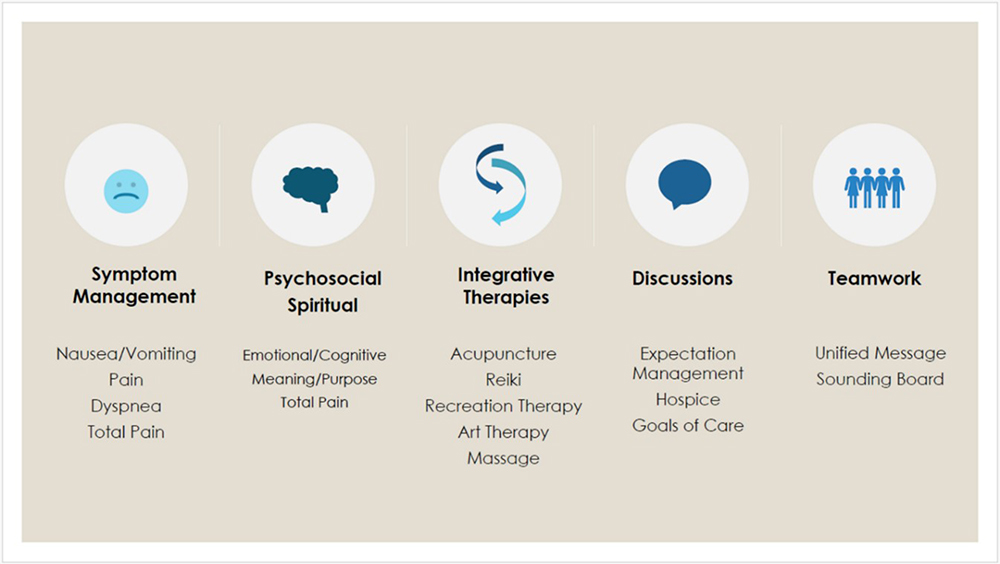To learn more about the NIH Clinical Center environment, check out the Discovery Channel documentary First In Human.
For more information about the program, visit the NIH GME website.
Key Feature #1: Complementary Modalities
During your training, you will work with interdisciplinary team members and learn how to integrate various complementary modalities into the care of patients, and utilize non-pharmacologic interventions for overall well-being, management of chronic and acute pain and other symptoms.
Key Feature #2: In-Depth Psychosocial-Spiritual Learning
The faculty at the NIH HPM fellowship training program is committed to your growth as a Hospice and Palliative Medicine physician. One of the hallmarks of palliative care is the opportunity and obligation to care for the whole person. This is true for how we care for our patients...it is also true for how we view fellow education. This means learning how to assess our patients' and caregivers' physical, psychosocial and spiritual needs as well as reflecting on our own experiences and exploring opportunities for personal growth. This is achieved through an interdisciplinary team approach to both patient care and fellow education.

Key Feature #3: Upstream Palliative Care
Fellows often see patients upstream in their disease course, and as a team, we have patients who we've followed since the inception of the Pain and Palliative Care Service in 2000. As a fellow, you will have the opportunity to follow patients over months and even throughout your entire fellowship year. Whether it is someone who is admitted for stem cell transplant and anticipated to remain in the area of at least 100 days, a patient with recurrent visits for underlying primary immunodeficiency, or someone who is here for an complex surgical procedure, we often have the privilege of knowing patients and caregivers over time. Because we also function as the Clinical Center's pain service (there is not a separate pain team), we are also consulted for pain management, and our fellows become familiar with using pharmacologic and non-pharmacologic interventions for Total Pain care.
One such patient we had the privilege of caring for upstream is Andrew Lee. He was an advocate for research of rare kidney cancers, and the Pain and Palliative Care Service got to know him while he was on protocol at the NIH Clinical Center and eventually cared for him at the end of life in the NIH hospice unit. His legacy continues through the work of Driven to Cure in promoting advances in care for Hereditary Leimomyomatosis and renal cell cancer patients.
While NIH Clinical Center provides the upstream symptom management experience, this is balanced with experiences at Holy Cross, where fellows will participate and lead family meetings. Fellows also participate in the care of patients admitted to the NIH Hospice Unit. The strengths of our additional rotation sites – Montgomery Hospice and Charles E. Smith Life Communities – provide our fellows with a well-rounded educational experience.
Key Feature #4: Exposure to Pediatric, Adolescent, and Young Adult Population
Through the NIH Hospice and Palliative Medicine fellowship program, fellows will have experience caring for children, especially adolescents and young adults living with serious illness or rare diseases. The program has successfully graduated several pediatric-trained physicians. We invite pediatricians to consider our program, as well as encourage applications from physicians of varied backgrounds and walks of life. Please check out our testimonial page and meet our graduates!
For more information about the program, visit the Graduate Medical Education (GME): National Institutes of Health Hospice and Palliative Medicine Fellowship web page.

